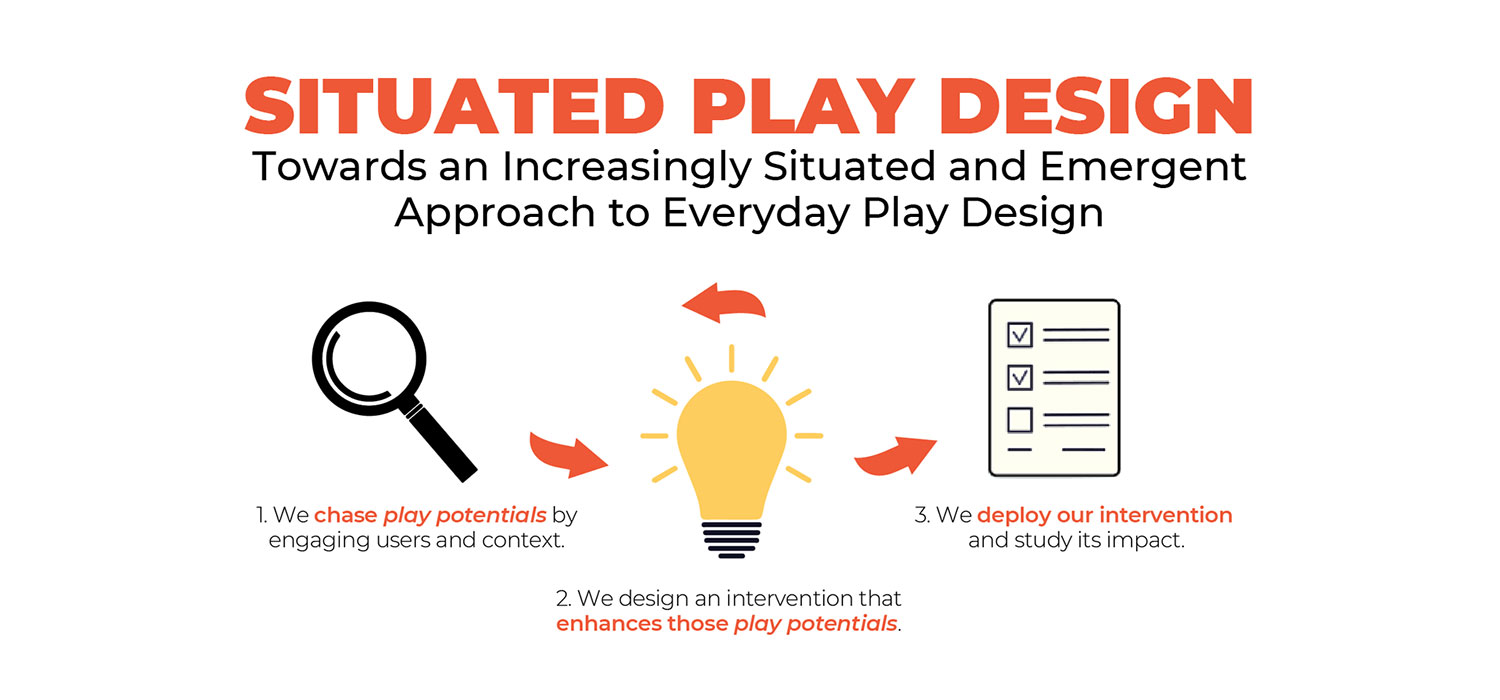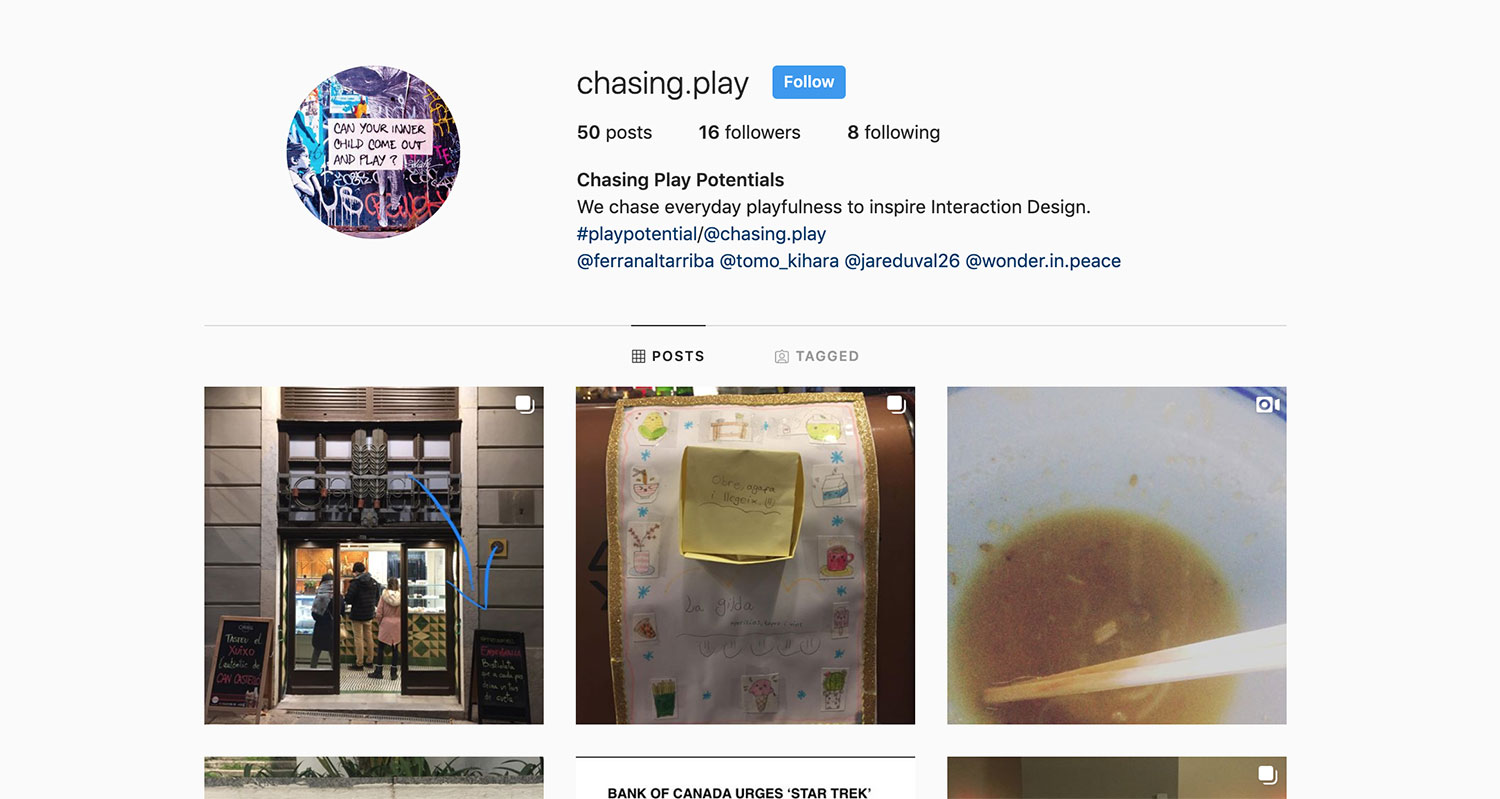« View all research
#Design Methods
Drawing From Social Media to Inspire Increasingly Playful and Social Drone Futures
.jpg)
In this project, we created a pictorial where we explore the potential of social media to help inspire ideas for future drone design applications that support playful and social experiences. Drawing from a Situated Play Design approach, we turn to social media posts to identify recurring playful and social instances of drone use in social settings. We present the results of collecting 143 posts found on Instagram, TikTok, and YouTube, from which we identified a non-exhaustive list of drone-based play potentials, i.e. existing ways in which people already appropriate drones to playfully augment social situations. We present these play potentials as potentially valuable and inherently situated intermediate-level knowledge with generative power. We argue they might inspire the design of future drone technologies and experiences in Human-Drone Interaction (HDI), in directions that increasingly respond to people’s desires for play and social connection. This project was led by Alexandra Pometko and co-authored with Ella Dagan, Ferran Altarriba Bertran, and Katherine Isbister.
#Social Augmentation#Design MethodsSituated Play Design: a Novel Approach to Designing Playful Technology

User involvement is well established in game and play design. But in a time when play design is becoming relevant in domains beyond pure entertainment, and play blends into everyday activity in diverse ways, we need to revisit old, and develop new, user involvement methods. Using a situated perspective and Research through Design, we presented Situated Play Design (SPD), a novel approach for the design of playful interventions aimed at open-ended, everyday activities that are non-entertainment based. Like user-centered game and play design methods, our contribution leverages user engagement; like Participatory Design methods, our method acknowledges the co-creating role of end users. SPD extends those approaches by focusing on uncovering existing manifestations of contextual playful engagement and using them as design material. Through two case studies, we illustrated our approach and the design value of using existing and emergent playful interactions of users in context as inspirations for future designs. This allowed us to provide actionable strategies to design for in-context playful engagement. This project was led by Ferran Altarriba Bertran and co-authored with Elena Márquez Segura, Jared Duval, and Katherine Isbister.
#Design MethodsChasing Play With Instagram

Play and playfulness permeate our daily lives and are often the target of interaction de-signers. Yet, designing for play while embracing the idiosyncrasies of users and their con-texts is challenging. Here we addressed recent calls for new situated and emergent play de-sign methods by turning to social media, which is currently a source of inspiration for arts, crafts, fashion, and more. We presented @chasing.play: an exploration of how Instagram may help designers capture and share instances of mundane playful engagement to inspire design. We reported on the findings of a pilot study where we experimented with the tool, and raise a challenges and open questions we plan to address in the future. Our work can trigger discussions among researchers about the potential of social media as a design tool, and can inspire and invite action towards collectively defining strategies to leverage that potential. This project was led by Ferran Altarriba Bertran and co-authored with Ella Dagan, Laia Turmo Vidal, Elena Márquez Segura, Jared Duval, and Katherine Isbister.
#Design MethodsExperimental Food Design and Research

Recognising the need for increasingly critical approaches to Human-Food Interaction research, we joined forces with researchers from other universities to co-found the Feeding Food Futures (FFF) network. FFF is a collective of Human-Food Interaction (HFI) researchers, designers, practitioners, and (human and non-human) eaters exploring the intersection between food, technology, and culture. We design experimental HFI tools and events to provoke material reflections of contemporary human-food-technology ecosystems, with a broad take on what constitutes technology. We aim to nurture critical and playful HFI approaches that support participatory human-food engagements rather than ready-to-use solutions. This project, and the many initiatives it encompasses, was initiated by Ferran Altarriba Bertran in collaboration with Markéta Dolejsova (Aalto University), Danielle Wilde (University of Southern Denmark), and Hilary Davis (Swinburne University of Technology).
#Design MethodsPlayful Gastronomy

Socialisation, eating and play are core activities that make us human. While they are often brought together, play theory suggests that their combination has unexplored potential in the context of gastronomy. Our research also indicates that a chef’s desire to control the meal may be a key impediment to developing dining experiences in which the diner’s playful engagement impacts taste, texture and flavour combination. In this project, we investigate if combining participatory Research through Design and play theory might better situate chefs to diversify their approach to playful gastronomy. This project is led by Ferran Altarriba Bertran, and co-authored by Danielle Wilde (University of Southern Denmark), Rosa Lutz, and Katherine Isbister.
#Design Methods